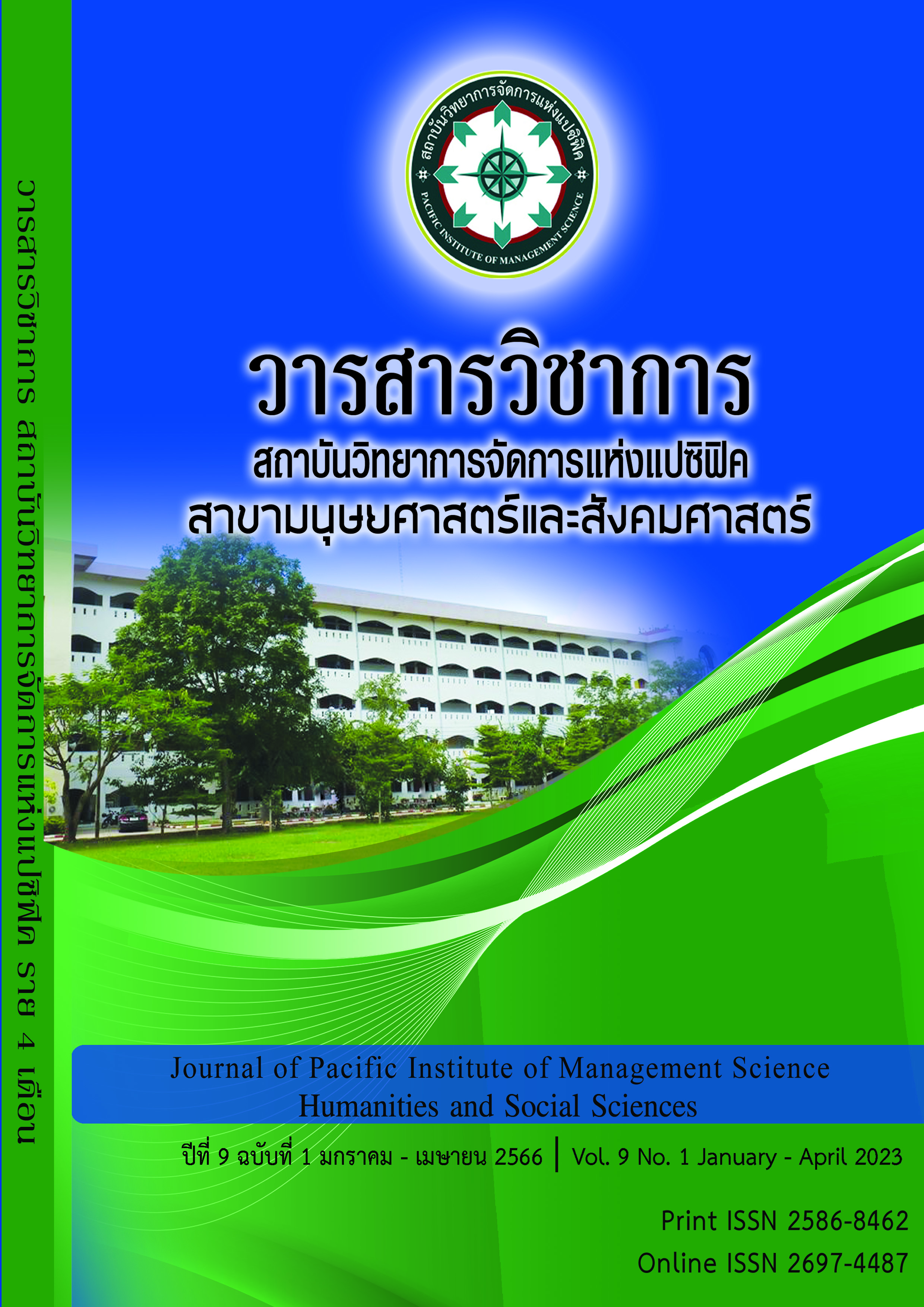Investigating the Psychosocial Impact of Upgraded Thai Folk-Designed Rehabilitative Devices on Children with Cerebral Palsy
Keywords:
Rehabilitative Devices, Cerebral Palsy, Physical Therapy, Psychosocial Impact Assessment, Adaptability, Self-esteem, Activities, Positive Self-esteem BoostAbstract
Children with cerebral palsy can improve their physical development through physical therapy combined with rehabilitation equipment, which is a widely accepted method in the medical profession. However, accessing such equipment is becoming increasingly difficult due to the rising number of affected children, as well as the expenses and travel required for continuous therapy sessions. To address this issue, a device was developed based on traditional knowledge. However, its versatility was limited and did not fully meet the needs of its users. This study aimed to assess the psychosocial impacts of the device and evaluate user satisfaction through interviews with users and stakeholders. The initial assessment showed that the overall psychosocial impact was moderately positive, with adaptability inversely correlated with self-esteem. Furthermore, users were able to engage in more activities using the device, resulting in a positive self-esteem boost.
References
Arthanat, S., Wu, S., Buarer, S., Lenker, J., & Nochajski, S. (2009). A review of instrumented equipment to measure balance and mobility in older adults. Assistive Technology, 21(4), 210-222.
Arthanat, S., Wu, Y.H., Buarer, N., Lenker, J., & Nochajski, S.M. (2009). Satisfaction with assistive devices: Effect of device-related and user-related factors. Assistive Technology, 21(4), 217-231.
Avneet, K. (2013). Use of electronic aids to daily living in improving performance of daily activities for individuals with disabilities. International Journal of Emerging Technologies and Applications in Engineering, Technology and Sciences, 6(1), 49-52.
Burton, C., Nieuwenhuijsen, E.R., & Epstein, M.J. (2008). Systematic review of the effects of occupational therapy interventions for people with multiple sclerosis. American Journal of Occupational Therapy, 62(3), 325-335.
Caligari, M., Godi, M., Guglielmetti, S., Franchignoni, F., & Nardone, A. (2013). Effects of ankle-foot orthoses on trunk sway and body balance in patients with hemiparesis after stroke: A systematic review and meta-analysis. Clinical Rehabilitation, 27(10), 895-908.
Day, H., Jutai, J.W., & Campbell, K. A. (2002). Lessons Learned and Future Directions in Measuring the Psychosocial Impact of Assistive Devices: Development of a Scale. Disability and Rehabilitation, 24(1-3), 31-37.
Demers, L., Monette, M., Descent, M., Jutai, J.W., & Wolfson, C. (2002). Outcome Measure for Assistive Technology: Development and Initial Testing of the Quebec User Evaluation of Satisfaction with Assistive Technology (QUEST 2.0). Rehabilitation Psychology, 47(3), 276-287.
Hsieh, Y.W., & Lenker, J.A. (2006). Challenges and Opportunities for Rehabilitation in Assistive Technology for Community-Dwelling Older Adults. Journal of Rehabilitation Research and Development, 43(5), 611-622.
Jutai, J. W., Woolrich, W., Campbell, K. A., Gryfe, C. I., & Day, H. (2000). The psychosocial impact of assistive devices scale (PIADS): Translation and preliminary psychometric testing of a Chinese version. Disability and Rehabilitation, 22(14), 640-648.
Khezri, S., Ghaffari, M., Ansari, N.N., & Ebrahimian, M.R. (2022). Device Usability and Psychosocial Impacts on Rehabilitation Outcomes: A Narrative Review. Archives of Rehabilitation, 23(1), 122-134.
Kim, J.H., Kim, J.Y., & Lee, B.H. (2019). The effectiveness of assistive technology in improving the functional outcomes of individuals with disabilities: A systematic review. Disability and Rehabilitation: Assistive Technology, 14(6), 625-634.
Kim, K., Kim, K., & Kim, J. (2020). Enhancing Lower Limb Functions in Children with Disabilities: Development of a Training Device. International Journal of Environmental Research and Public Health, 17(13), 46-75.
Orellano, E.M., & Jutai, J.W. (2013). Factors that influence powered mobility adoption: A systematic review. Disability and Rehabilitation: Assistive Technology, 8(3), 1-12.
Panyawong, S., Triwitthaya, A., & Phonthee, S. (2017). Effects of an ankle-foot orthosis with ankle lock and assist on gait performance in children with spastic cerebral palsy. Journal of Physical Therapy Science, 29(1), 1-5.
Piyawat Triwitthaya, Jananya Panyamee Thippayom, Ninlapa Suangka, & Pueanjai Rattakorn. (2016). Psychosocial Impact of Assistive Devices Scale (PIADS) Thai version: Translation, cross-cultural adaptation and psychometric evaluation. Journal of Physical Therapy Science, 28(10), 2818-2823.
Scherer, M.J., & Glueckauf, R.L. (2005). Assessing the benefits of assistive technologies for activities and participation. Rehabilitation Psychology, 50(2), 132-141.
Scherer, M.J., Sax, C., Vanbiervliet, A., Cushman, L.A., & Scherer, J.V. (2005). Personal and Psychosocial Factors as Predictors of Assistive Technology Use. Disability and Rehabilitation, 27(21), 1321-1331.
Triwitthaya, A., Sanguankeo, A., Thakkinstian, A., Mhuangphru, S., & Yanamandra, K. (2016). Psychosocial impact assessment of a mobility assistive device for children with cerebral palsy. Journal of Pediatric Rehabilitation Medicine, 9(4), 313-319.
Waraporn Panyawong, Benjaporn Saksiri, & Pornpun Somboon. (2017). Psychosocial impact of assistive devices scale (PIADS): Translation, cross-cultural adaptation and psychometric evaluation of the Thai version. Journal of Health Research, 31(2), 160-168.
Weerapong, P., & Numnaphol, U. (2018). Upgrading Thai folk-designed rehabilitative devices for children with cerebral palsy: A systematic approach. Engineering Journal, 22(6), 207-228.
Downloads
Published
Issue
Section
License
Copyright (c) 2023 Pacific Institute of Management Science

This work is licensed under a Creative Commons Attribution-NonCommercial-NoDerivatives 4.0 International License.
บทความที่ได้รับการตีพิมพ์เป็นลิขสิทธิ์ของ สถาบันวิทยาการจัดการแห่งแปซิฟิค
ข้อความที่ปรากฏในบทความแต่ละเรื่องในวารสารวิชาการเล่มนี้เป็นความคิดเห็นส่วนตัวของผู้เขียนแต่ละท่านไม่เกี่ยวข้องกับสถาบันวิทยาการจัดการแห่งแปซิฟิค และคณาจารย์ท่านอื่นๆในสถาบันฯ แต่อย่างใด ความรับผิดชอบองค์ประกอบทั้งหมดของบทความแต่ละเรื่องเป็นของผู้เขียนแต่ละท่าน หากมีความผิดพลาดใดๆ ผู้เขียนแต่ละท่านจะรับผิดชอบบทความของตนเองแต่ผู้เดียว







